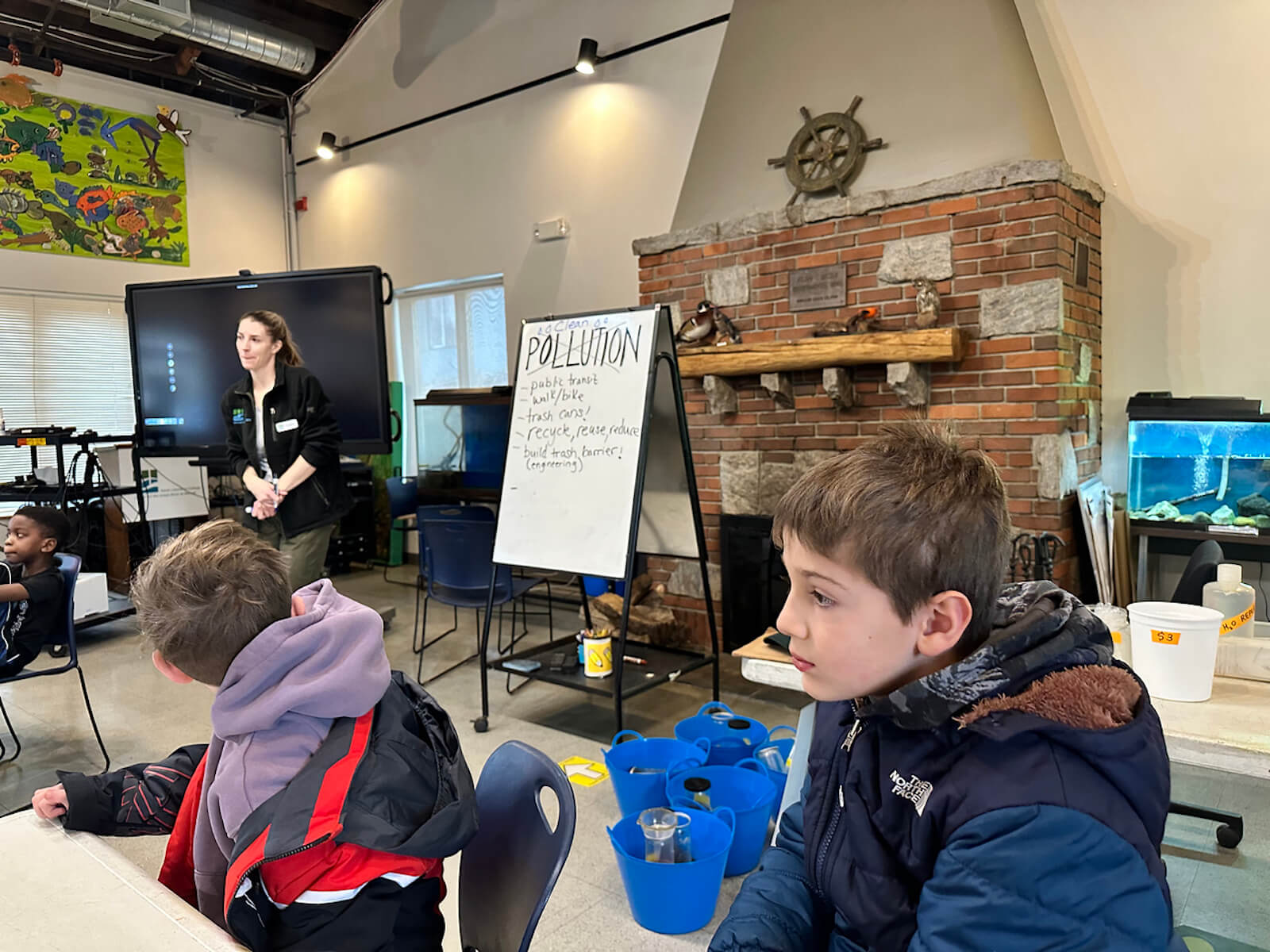This month, Fieldston Lower’s 2nd Graders took a trip to Beczak Environmental Educational Center as an introduction to their study of oceans, water sources, and environmental activism. The Beczak Center, in partnership with Sarah Lawrence College, aims to provide hands-on educational experiences about the unique Hudson River estuary, ecological, cultural, and historical aspects, and strategies for climate resiliency.


Students are in the midst of learning about environmental activism and ways they can make an impact in their community. First, students were asked to explain pollution. Students had varied answers, from “trash” to “chemicals,” “plastics,” and “oil.” They even learned a new word: “sedimentation,” and learned about the effect that this kind of dirt has on the Hudson River.

Next, students were tasked with conducting an experiment to clean water. Students were given a bottle of dirty water filled with chemicals, trash, oil, and sediment and $7.00 to buy supplies to help with the process. Experts at the Beczak Center explained that $7.00 isn't quite enough to buy all the supplies, so each group needed to use their math skills to decide how to budget and allocate their funds to buy the most important materials.



Once students had chosen and purchased their materials, they had to devise a strategy using the tools purchased to clean the dirty water as best as possible.


After using the tools to clean the dirty water bottles, a "Water Inspector from New York City" visited their tables to examine the efficacy of each group's efforts.


The “Water Inspector” asked students questions such as: “How much effort was it just to work on this small sample?” After contemplating this question, students were asked to think about how much effort, money, and time it takes to clean the actual Hudson River.


